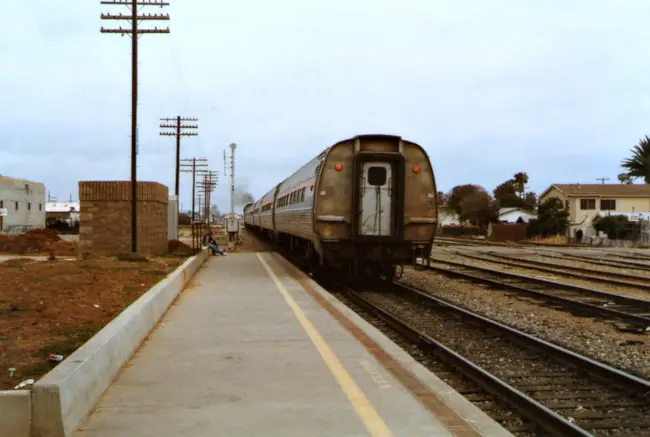The Budd Amfleet cars were a fleet of 642 modern streamlined passenger cars ordered to modernize the failure prone cars the railroad inherited. The Amfleet’s have decades of reliability under their belt, and were crucial to the rejuvenation of passenger rail service in both the Northeast and throughout the network.
Built at Budd’s Red Lion plant in Philadelphia between 1975-1983, the Budd Amfleet family of passenger cars have experienced decades of reliable service for Amtrak. When Amtrak began operating the nation’s passenger trains on May 1, 1971, the newly formed railroad inherited many passenger cars from various railroads throughout the country. However, because Amtrak inherited a plethora of cars from different railroads, many were not compatible with each other, furthermore, they were beginning to show their age, as many were built in the 1940’s. Thus, it was crucial for Amtrak to develop a standardized fleet in order to rejuvenate the country’s passenger rail system.

Constructed based on the Metroliners built for the Pennsylvania Railroad, the first order amounted to 57 cars, which were initially planned to act as a supplement to the highly marketed Metroliner. However, with such a vast system spanning the entire length of the country, subsequent orders were soon processed, resulting in a total of 642 cars, 492 Amfleet I’s, designed for short-haul services, and 150 Amfleet II’s, designed for long distance service. After the construction of the Amfleet II cars was complete, the Budd Company closed its doors, making the Amfleet II’s the last intercity passenger cars constructed by the storied railcar builder. To haul the new passenger cars, Amtrak ordered 73 GE E-60 locomotives in 1972, which would command the Northeast Corridor for almost three decades.
With the Amfleet cars in service throughout the Amtrak network, reliability and customer satisfaction increased exponentially. Therefore, the train became a more attractive mode of transport, thus, increasing the railroad’s revenue. Because of the dense population in the Northeastern region of the country, the AEM-7 locomotive was soon ordered to supplement the GE E-60 fleet, and replace the workhorse GG-1’s. Amfleet cars continue to be the mainstay of Amtrak’s fleet in the Northeastern and Midwestern regions of the country, albeit, after various rebuilds.
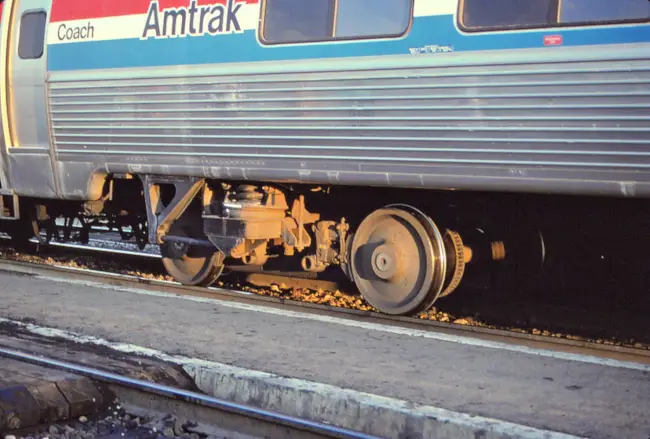
Technical
When first introduced, the Amfleets(affectionately called Amcans)were state-of-the-art passenger cars, with its modern streamlined design, it helped pave the future of Amtrak. The cars were the first of its kind for Amtrak to include electric heat and modern head end power (HEP), which was powered by a generator in the locomotive. Amfleet cars measure in at 12 ft 8 in tall, and 10 ft 6 in wide, and 85 ft 4 in long. The cars featured the Budd Company’s notable Pioneer III trucks which included disc brakes, however, were later supplemented by the addition of tread brakes. Initially, their top speed was 120 mph, however, were later modified to travel at 125 mph, which is the top speed of many Northeast Corridor trains.
Interestingly, due to Amtrak’s quest to give their passengers modern comforts, the cars were designed based on a common airliner design of the day. The cars featured seats designed by Aircraft Mechanics Inc. subsidiary Amirail, in order to encompass a more contemporary design. Compared to the stock they were to replace, the cars had noticeably smaller windows, furthering the modern aircraft feel. However, the decision to equip the cars with small windows was due to the common occurrence of rocks being thrown at the train, as this issue often plagued railroads in the 1970s.
| Builder | Budd Company |
| Date Built | 1975-1983 |
| Number Built | Amfleet I: 492 Amfleet II: 150 |
| Weight | Coach: 106,000 lbs Café: 110,000 lbs Lounge: 113,000 lbs |
| Height | 12 ft 8 in |
| Width | 10 ft 6 in |
| Length | 85 ft 4 in |
| Car Numbers | Amfleet I coach: 82500-82999 Amfleet I business class: 81501-81547 Amfleet I club dinettes: 48140-48196 Amfleet I dinettes: 43344-43397 Amfleet II diner lites:28000-28024 Amfleet II coach: 25000-25124 |
| Car Body | Stainless steel |
| Power Supply | 480 V AC |
| Construction | Spot welded stainless steel |
| Head End Power (HEP) | Electric, locomotive generated. |
| Braking Power | Disc/tread |
| Coupling | AAR Type H |
| Wheel Diameter | 36 in |
| Window Diameter | Amfleet I- 18 x 64 in Amfleet II-22 x 64 in |
| Number of Doors | Amfleet I -4 Amfleet II-2 |
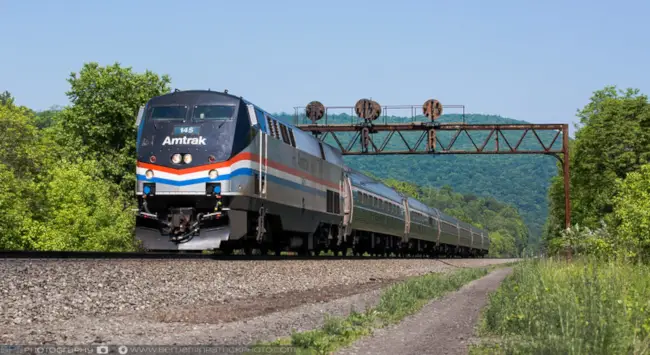
Amfleet 1
The Amfleet I’s were included in the initial order of fifty-seven cars which cost Amtrak $24 million. These were designed to supplement the existing Metroliner electric multiple-units (EMU), and increase service capacity on the coveted northeast corridor route between New York-Washington D.C. These cars were to operate in tandem with the new General Electric E-60 locomotives, which began being delivered in 1972. With increased ridership on the Metroliner, and Northeast Corridor as a whole, Amtrak placed three subsequent orders totaling 435 cars, the final price for the Amfleet I cars totaled $192 million.
Upon the introduction of the new modern fleet, a few of the cars were thoroughly tested at the High Speed Ground Test Center in Pueblo, Colorado, and delivered to Amtrak in 1975. The cars began operating on August 5, 1975, and were met with much fanfare. Amtrak marketed the trains including the new cars as an “Amfleet Service”. On their maiden run, customers were greeted with a special ticket stating “Amtrak Special Guest, Amfleet Maiden Run.” In just a few short years after the arrival of the Amfleet, ridership on the Northeast Corridor spiked 11% on trains operating the new cars.
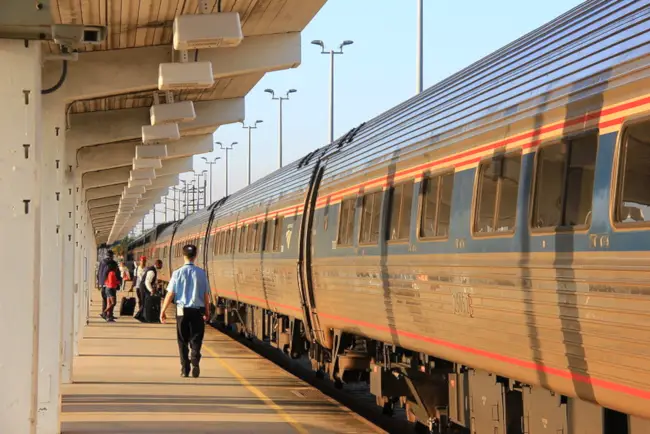
Although revolutionary in their own right, the Amfleets were incompatible with much of the diesel-electric equipment on the system, which restricted their operations to certain regions of the country. However, with the introduction of the new short haul EMD F40PH locomotives, the Amfleets found their way onto almost every short-haul route on the system.
The Amfleet cars especially proved their worth in the winter, as many of the older cars on the system frequently experienced failures with their aged steam generators, used to heat the passenger cars. These failures pressed the Amfleet cars into long distance services, as well as the F40PH locomotives. Furthermore, due to its stark reliability, the F40Ph eventually became the backbone of Amtrak’s long and short haul diesel fleet for decades.
Because the portion of the line between New York and Boston was not electrified until the late nineties, through services to Boston were not feasible with the Metroliners. Therefore, the Amfleet made this service feasible, as diesel power could be utilized through to Boston, further expanding modern rail service to much of the population of the northeast.
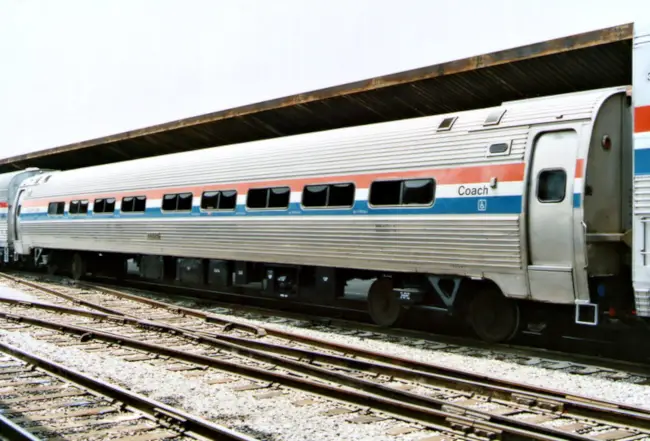
Amfleet II
Due to the failures of the aging long distance stock, and the success of the modern Amfleets, Amtrak decided to place an order for 150 long haul Amfleets, named Amfleet II’s. The Amfleet II cars featured added amenities including increased leg room, tables, and other modern comforts.
Operating in tandem with heritage diners and sleeper cars, the Amfleets were a mainstay on every long distance train east of Chicago, they were even utilized on the Auto Train and Capitol Limited, which later utilized Superliners after the delivery of the Superliner II.
Trains Operated Utilizing Amfleet II Cars Post 2010
| Silver Service- Silver Meteor/Silver Star | New York-Miami |
| Palmetto | New York-Savannah, Georgia |
| Lake Shore Limited | New York-Buffalo-Chicago |
| Crescent | New York-New Orleans |
| Cardinal | New York-Chicago |
| Carolinian | New York-Charlotte, North Carolina |
| Pennsylvanian | New York-Pittsburgh |
Configurations
Because of the various service levels Amtrak wanted to provide for their customers, the Amfleets were configured in various ways. These included the standard coach cars, cafes, clubs, and lounges. Additionally, Amtrak tossed around the idea to convert some Amfleets into sleeper cars, and even converted two coaches, however, they decided not to pursue the idea, as the heritage sleepers were sufficient, therefore, the two conversions were returned to coach configuration.
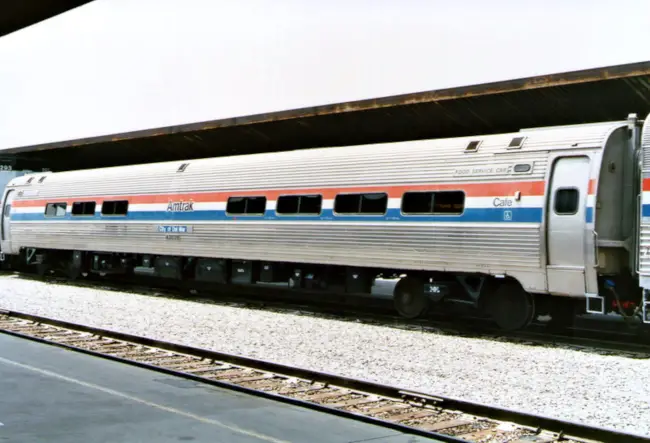
Coach
Amtrak ordered 361 Amfleet I coach cars, with a couple varying seat configurations, as some were slated to be utilized on long distance trains. There were 90 examples of long distance coaches configured to seat 60 passengers per coach. Short distance coaches totaled 271, and were configured in 84 seat variants. The Amfleet Is were constructed with four doors, two in each vestibule, for faster boarding times, which is crucial in the congested Northeast Corridor. In the early 2000s, Amtrak underwent a rebuild program called the “Capstone” project. During this project, and in concern for passenger comforts, three rows of seats were removed, reducing the seating capacity to 72. The long distance Amfleet I cars were later reconfigured as either short distance coach class cars with 74 seats, or business class coaches, with a capacity of 62 seats.
Built for long distance operation, the Amfleet II’s were all configured in a 59 seat configurations with a single vestibule and two doors. All Amfleet II cars were either in coach or business class configurations, and featured increased leg room and seat functions.
Cafe, Club and Lounge Cars
Attempting to rid itself completely from the heritage cars, Amtrak ordered 54 Amfleet I “Amcafe” cars, and 37 “Amdinette” cars. The cafe cars were essentially a 53 seat coach with a cafe in the middle, while the Amdinette cars included eight booths and 23 coach seats. Eventually, the Amcafe cars were later rebuilt into dinettes with all table seating, as the original Amcafe design proved unappealing to riders.
40 club cars dubbed “Amclubs” were built, and included 23 coach seats, 18 club seats, and a snack bar in the middle. Various club cars were rebuilt solely with club seating, being called full clubs, and the examples that remained in the original variation were called split Amclubs.
25 Amfleet II lounge cars dubbed “Amlounge” were built, which included 27 seats and 10 booths with a snack bar. Between 2006-2010, all examples were rebuilt to eliminate coach seating, creating a total of 26 booths.
The Amfleets played a vital role in the rejuvenation of American passenger rail. They assisted Amtrak in reaching their goals of significantly increasing ridership in a relatively short amount of time. Although the Amfleets are over 40 years old, their charm and reliability have remained strong, and will remain an important aspect in Amtrak’s history, long after their retirement.
